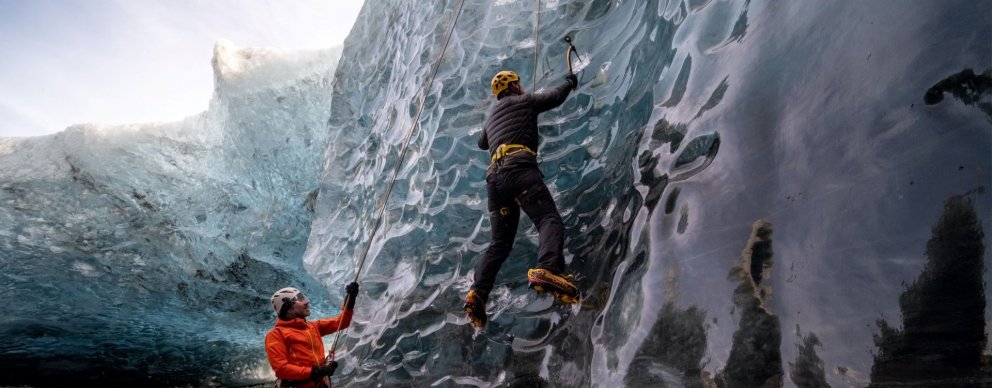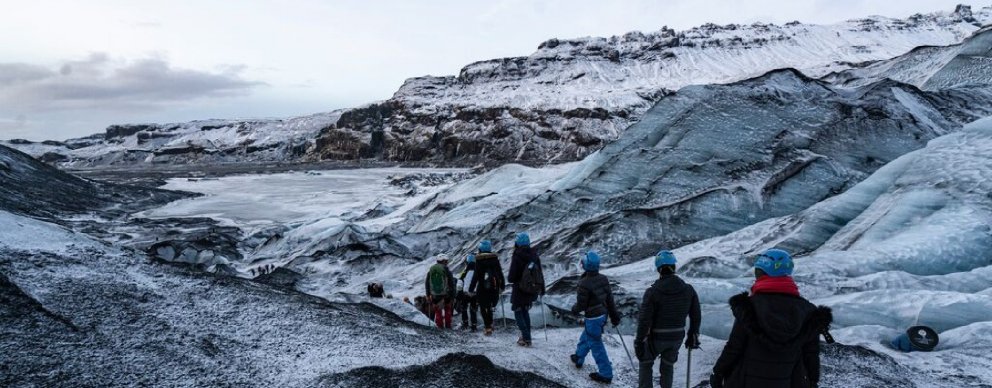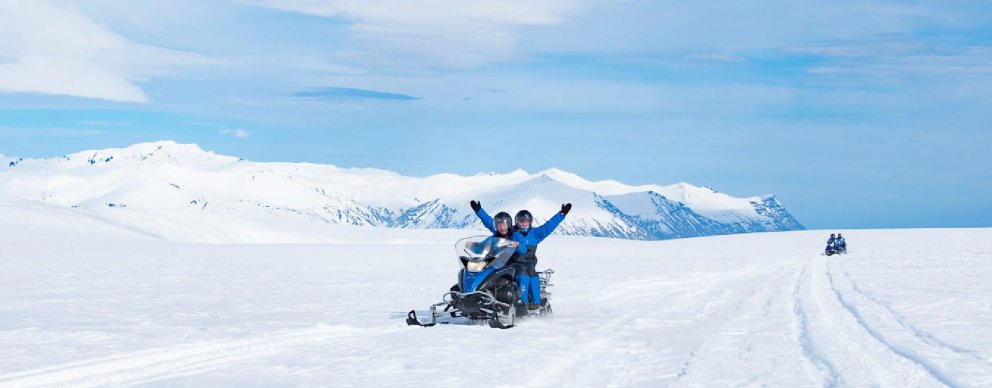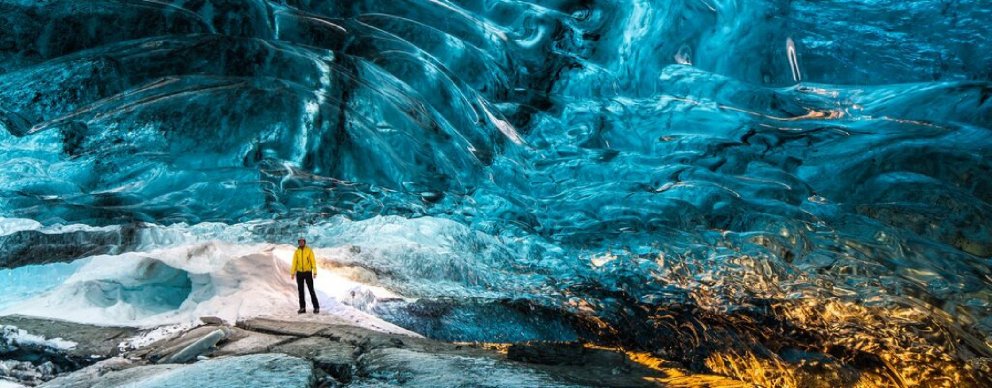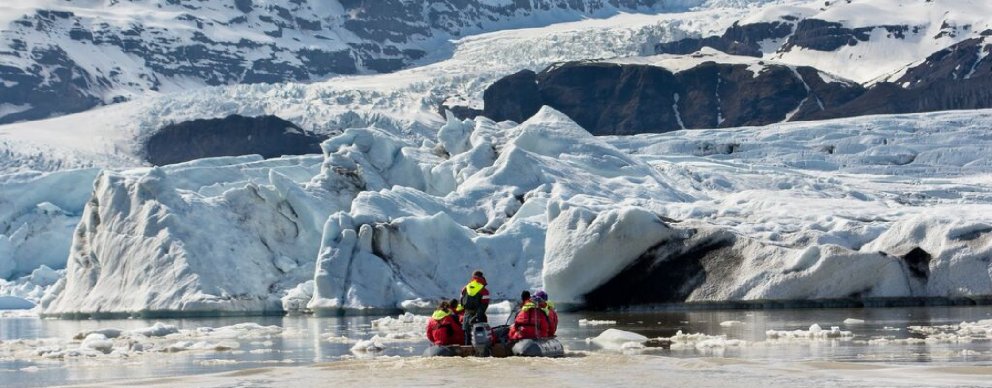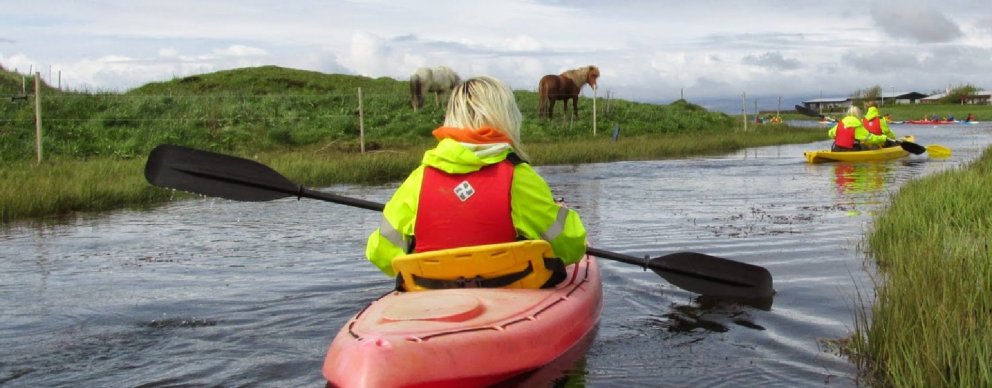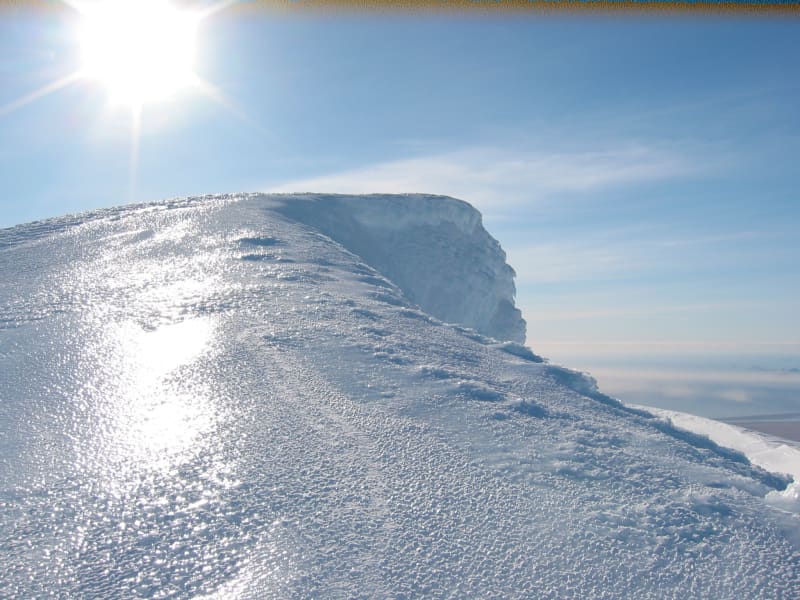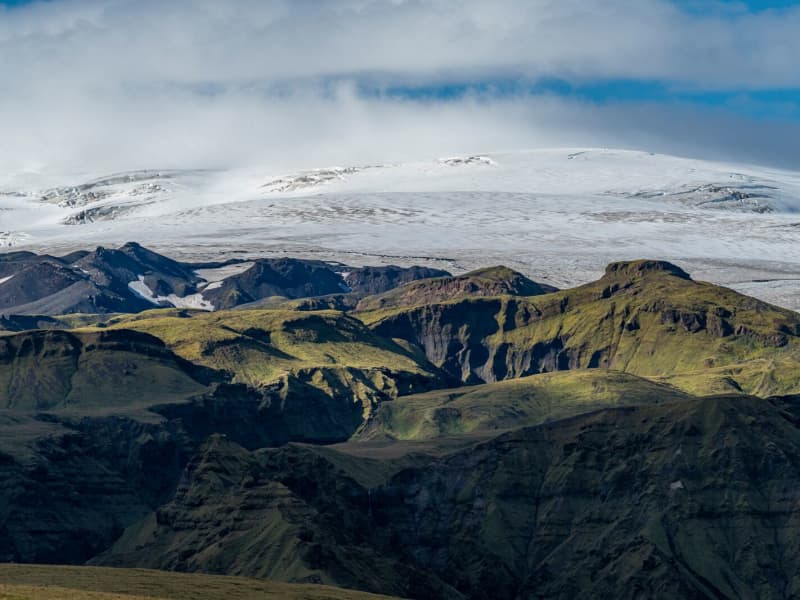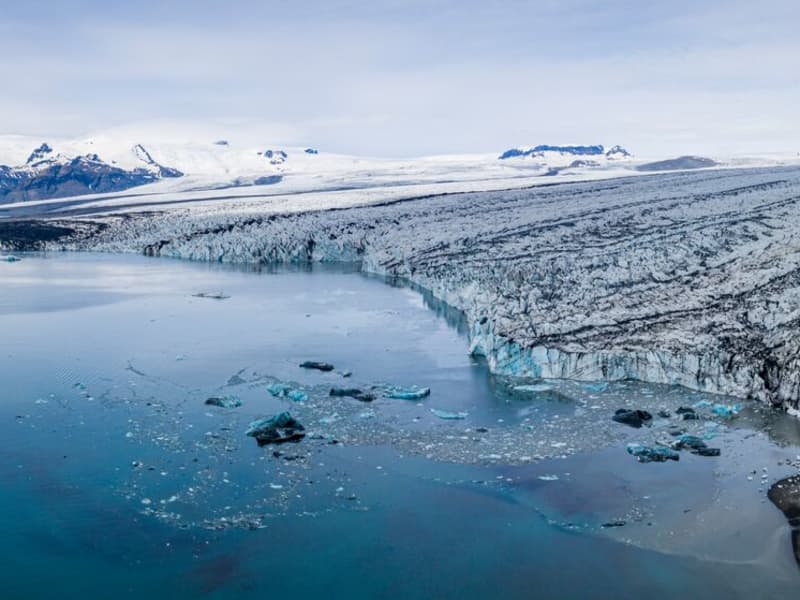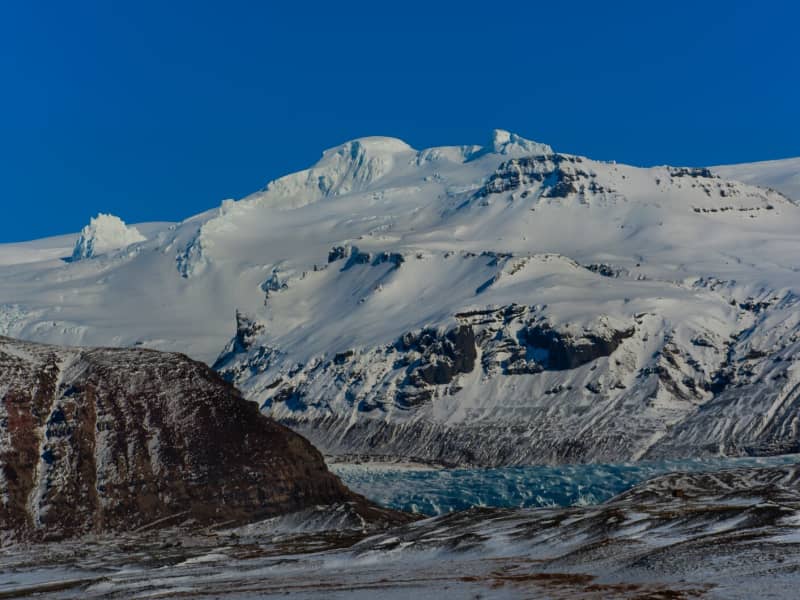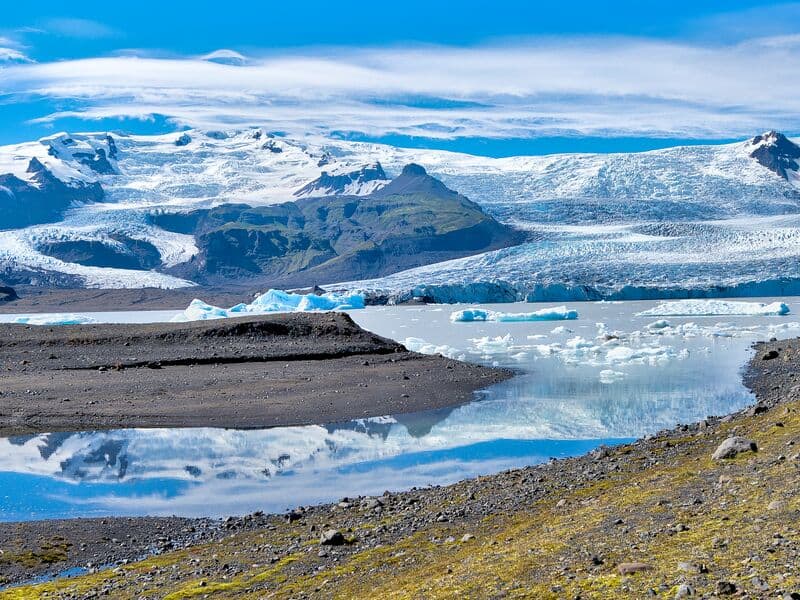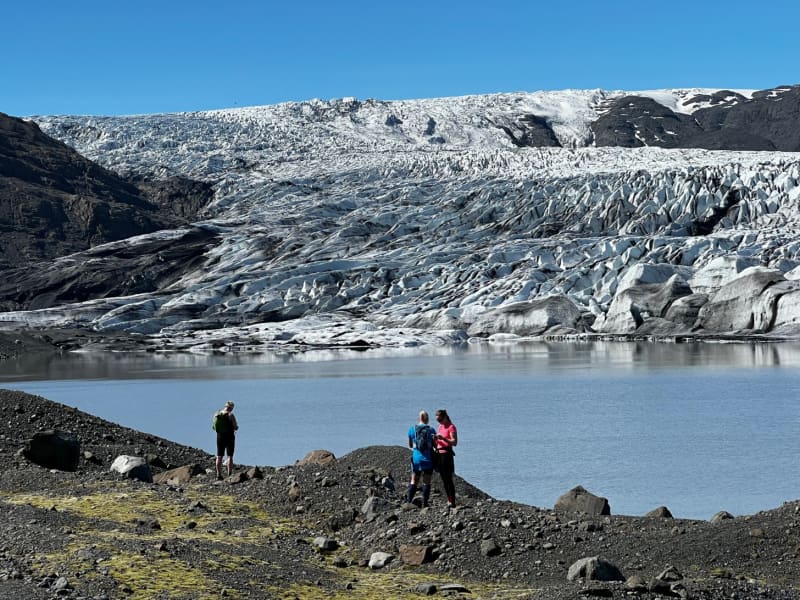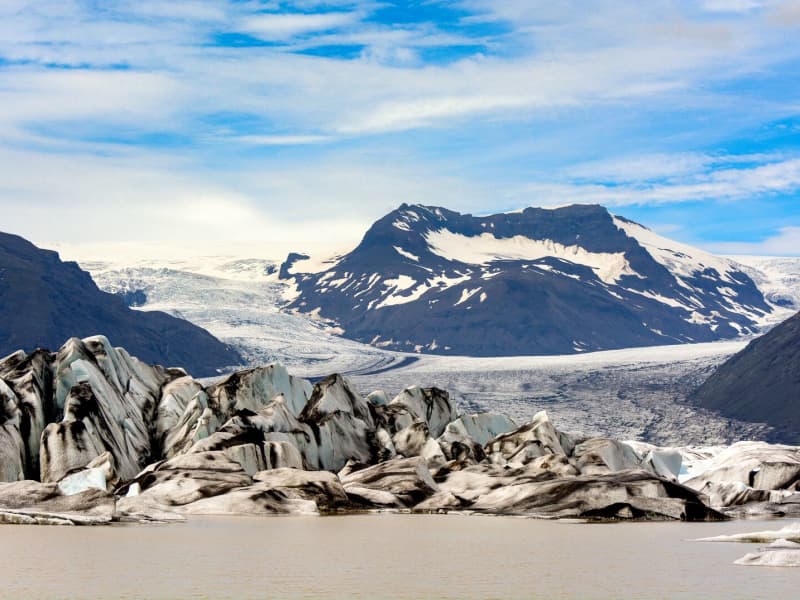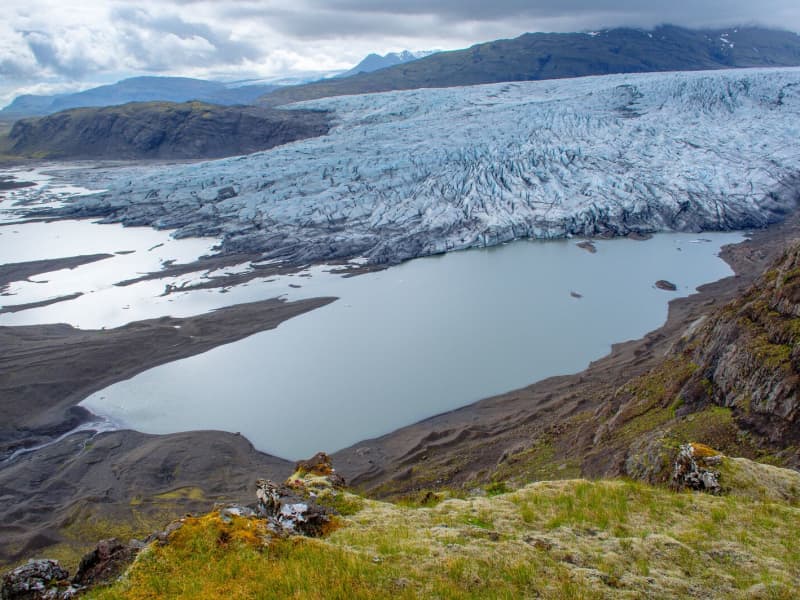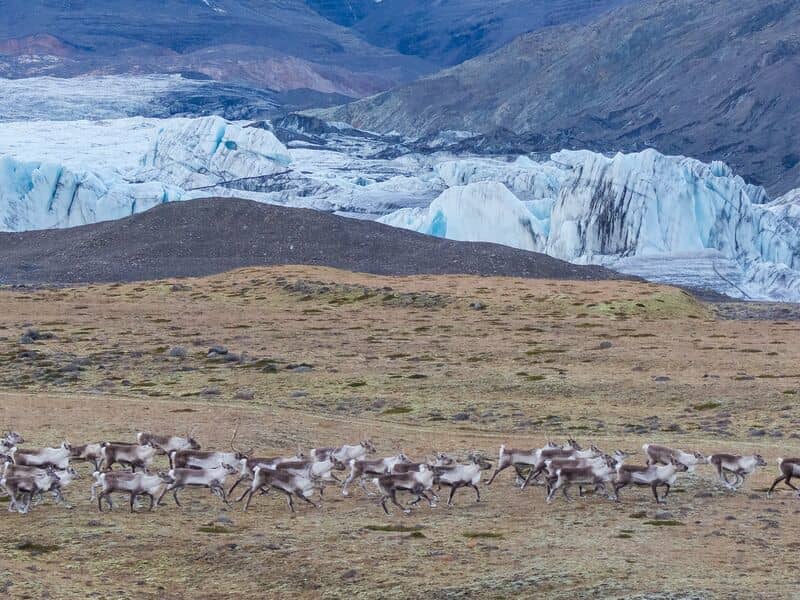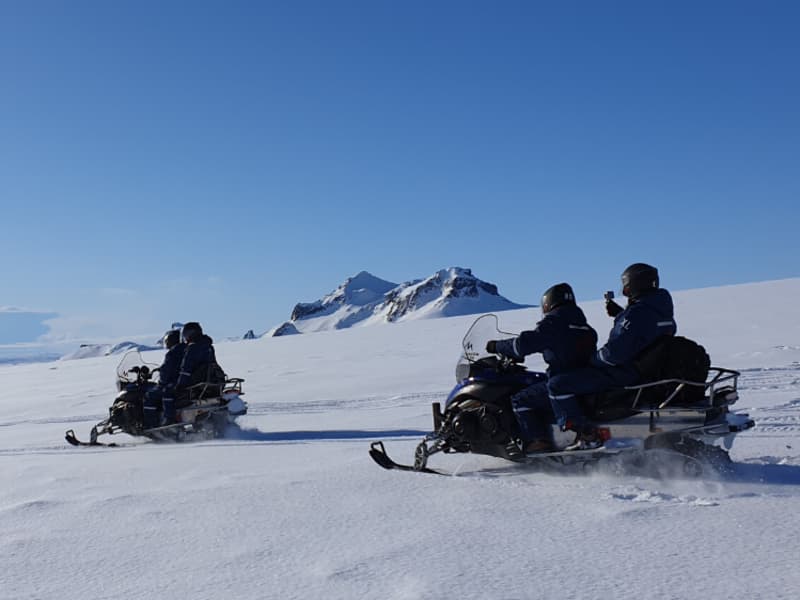Glaciers
Glacial ice covers approximately 10% of Iceland’s surface area and the country’s glaciers contain the same amount of water as approximately 20 years’ precipitation across Iceland. One of the key features of glaciers is that they move. When a glacier advances, its surface cracks as the top 20-30 metres are fragile while deeper down the ice is more solid. This is why valley glaciers are often heavily crevassed, with crevasses being up to 30 metres deep. A changing climate has an effect on the distribution and movement of glaciers. Iceland’s glaciers cover numerous active volcanoes, and eruptions and geothermal heat melt ice and can cause glacial outbursts. Around one-third of the water flowing to the sea in Iceland is glacial in origin. Some Icelandic glaciers are fairly remote but most of the large ones can be visited easily enough.
Southern Iceland is home to Iceland’s largest glaciers
Glaciers cover approximately 10% of Iceland’s surface. The largest glaciers are located in central and southern Iceland, the largest being Vatnajökull covering 7,900 km2 and with a volume of 3,000 km3. This makes it Europe’s largest glacier by volume and second largest in terms of area. Other major glaciers are Langjökull (900 km2), Hofsjökull (890 km2) and Mýrdalsjökull (560 km2). Iceland’s fifth largest glacier is Drangajökull (142 km2) located in the eastern part of the West Fjords.
Valley glaciers
A valley glacier is an outlet glacier that flows out of an ice cap. Most valley glaciers only advance a few hundred metres a year. However, some unstable valley glaciers can surge forward several kilometres.
Ice caves
Most ice caves are located where rivers flow out of glaciers and are formed when the ice melts during the spring. Ice caves formed by geothermal heat can also be found at several locations within the Vatnajökull National Park. Ice caves are often stunningly beautiful and entering them can be a memorable experience and many tourists naturally want to visit them. However, ice caves are by their nature rather unstable and are constantly changing and can therefore be dangerous to inexperienced visitors. Ice caves should not be visited without an experienced local guide and the necessary equipment, such as crampons, a helmet and a headlight.
Glacial lagoons
Glacial lagoons form at the head of valley glaciers. Glacial tongues erode the land and the moraine is washed away by the water bursting out from beneath the snout of the glacier. The resulting depression often becomes a lake as the glacier retreats. With the melting of the glaciers over the past few decades, glacial lagoons have formed in several places at the heads of valley glaciers in Southern Iceland. The water in the lagoon comes from melted ice and such lagoons often contain icebergs that have broken off the edge of the glacier.
The oldest and most famous glacial lagoons at Vatnajökull are Jökulsárlón and Fjallsárlón, but in the last few years, lagoons have formed next to the valley glaciers Skeiðarárjökull, Skaftafellsjökull, Svínafellsjökull, Kvíarjökull, Fláajökull, Heinabergsjökull and Hoffellssjökull as they have melted and retreated. A lagoon at the head of Gígjökull, a valley glacier extending down from Eyjafjallajökull, disappeared in the volcanic eruption in 2010. In recent years a large lagoon has formed at the head of Sólheimajökull, a valley glacier flowing out of Mýrdalsjökull.
Jökulsárlón
Jökulsá is a powerful but very short glacial river at Breiðamerkursandur (average flow 250-300 m³/s, but only 500 metres long). It flows from Jökulsárlón, which is easily the largest and best known glacial lagoon in Iceland.
Once upon a time the river Jökulsá emerged from the glacier and flowed 1 - 1.5 km to the sea. However, in about 1935 a lagoon began to form at the edge of the glacier and around 1950 the lagoon began to expand rapidly as the glacier retreated due to ice melt. At the same time, the river has become shorter due to wave erosion at the coast and if this continues the river will disappear and the lagoon will fill with seawater. The effect of the tide can already be felt in the lagoon. Attempts have been made to slow down this process by trying to combat erosion and raising the water level of the lagoon.
The river was first bridged in 1966-1967 and the bridge is 108 metres long. There was a ferry across the river from 1932 but prior to that crossing, the river was very difficult due to the strong current and icebergs. It was often impossible to cross and many people drowned over the years attempting to reach the other side. If it wasn’t possible to cross on horseback, for example when the river flowed in a single torrential channel and was not braided in several channels, people sometimes resorted to crossing the glacier above the source, but this was hazardous as the glacier was often crevassed. People began to mark out a path across the glacier around 1870.
Major glacial rivers in the western part of Southern Iceland
Two major glacial rivers are located in the western part of Southern Iceland. One of them is Þjórsá, at 230 km the longest river in the country. It originates in the glacier Hofsjökull. Þjórsá has been harnessed for power in the highlands. Several impressive waterfalls can be found in the river, such as Dynkur, Tröllkonuhlaup and Urriðafoss. The other river is Hvítá, whose source is the glacier Langjökull. The river Sog flows into the river east of Ingólfsfjall and the river then becomes known as Ölfusá. It has the largest discharge of any river in Iceland with an average flow of 423 m³/s. Ölfusá flows through the town of Selfoss and enters a large estuary before entering the Atlantic Ocean just west of the village of Eyrarbakki.
